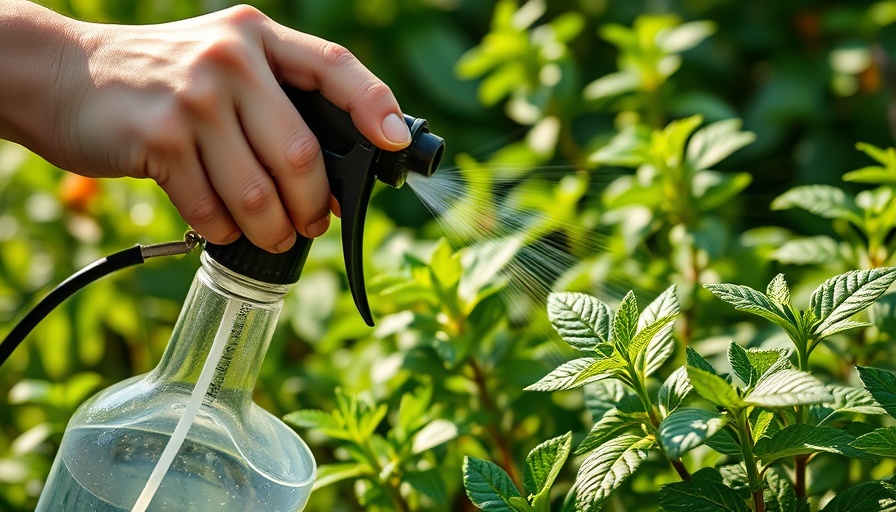
Transform Your Garden with Natural Pest Control Solutions
Gardening enthusiasts know the struggle: a flourishing garden filled with vibrant flowers and vegetable plants can often become a battleground against persistent pests. While many turn to chemical pesticides out of frustration, there is a method that's not only effective but also environmentally friendly. Homemade natural pest control sprays, especially those made with common herbs, can safeguard your garden while nurturing its beauty.
The Power of Herbs: A Natural Alternative
Using herbal ingredients in pest control is an age-old practice that has stood the test of time. For those keen on organic gardening, creating a pest deterrent spray can significantly reduce the reliance on harsh chemicals that threaten beneficial insects and the delicate balance of the ecosystem. Ingredients like garlic, peppers, and a range of herbs not only repel unwanted visitors but also promote a healthier garden environment overall.
Key Ingredients for Your Herbal Pest Spray
Let’s delve into the components of this simple yet powerful pest control solution:
- Garlic: Known for its strong aroma, garlic is unpleasant for many bugs. It acts as a smell barrier to cover the scent of more appealing plants.
- Hot Peppers: Capsaicin, the compound that gives peppers their heat, is particularly effective against larger pests like squirrels and chipmunks, making them think twice before munching on your plants.
- Liquid Castile Soap: This helps the spray adhere to plant surfaces and can aid in suffocating smaller pests. It’s a natural cleaner without harsh chemicals, making it a hearty addition.
Beyond these, herbs such as basil, rosemary, and mint can be included, each bringing unique properties that deter specific pests.
How to Make Your Herbal Pest Control Spray
Crafting this pest deterrent is not only easy but also a fun DIY project that adds a personal touch to your gardening routine. Here’s a simple recipe you can follow:
- 2 cups of water
- 4-6 cloves of crushed garlic
- 1 to 2 chopped hot peppers
- 2 tablespoons of liquid Castile soap
- 1 cup of assorted chopped herbs (like basil, rosemary, and mint)
A Sustainable Garden Starts with Awareness
Creating and using your own pest control spray highlights a significant shift towards sustainable practices in gardening. By choosing to keep your garden free from harmful chemicals, you not only preserve the health of your plants but also contribute positively to the environment. Organic gardening encourages the growth of plant diversity and the protection of pollinators like bees and butterflies, which are vital for a thriving ecosystem.
Actionable Tips for Effective Garden Pest Management
In addition to homemade solutions, integrating some practices into your gardening routine can prove beneficial:
- Monitor Plant Health: Keep a watchful eye on your plants, checking regularly for any signs of pest infiltration.
- Encourage Beneficial Insects: Plant flowers that attract pollinators and natural pest controllers like ladybugs and lacewings.
- Integrate Companion Planting: Plant compatible species together to naturally deter pests and enhance growth.
Taking a proactive approach with these strategies can help cultivate a garden that not only supports your local ecosystem but also brings joy and beauty.
Your Journey to Organic Gardening Starts Now
If you’ve been thinking about incorporating more sustainable practices into your gardening, why not start this weekend? With simple ingredients you likely already have at home, you can create your personalized pest deterrent spray and engage in a more organic lifestyle. Remember, gardening is about experimenting and finding harmony, and your journey to supportive gardening begins with a single spray!
 Add Row
Add Row  Add
Add 




Write A Comment